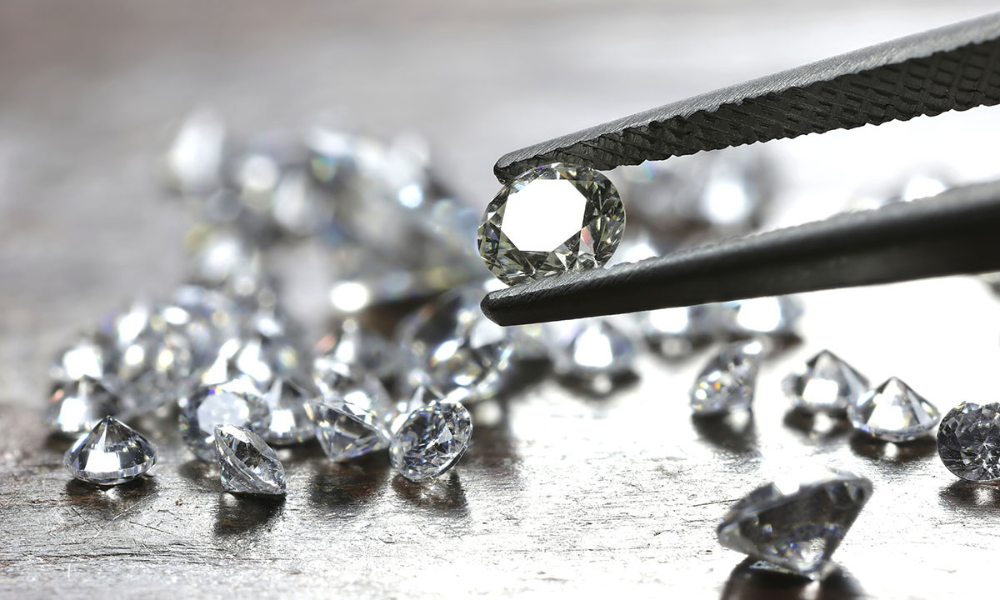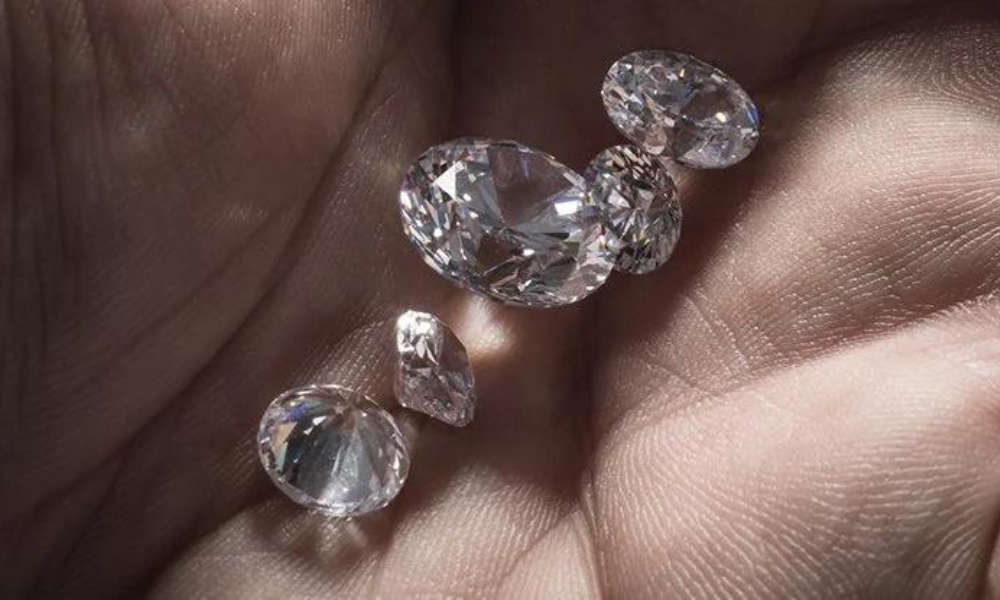The answer to the question “how to tell how many carats a jewel is” lies within its size. Carats are the weight of a diamond. However, the size of a diamond can vary by about five percent, or even more, in either direction. This article explains how you can determine the size of a diamond and the different carat weights. By following these guidelines, you’ll be able to make an informed decision about the size of your diamond.
The easiest way to know the weight of a diamond is to weigh it. Then, divide that weight by 0.2. For example, 0.3 grams of diamond weigh 1.50 carats. The weight of a diamond is often reflected in its size, so determining its size will give you an approximate idea of its weight. Most diamonds are cut into round, princess, or Ascher shapes.
What is the Definition of a Carat in Diamonds?
What is using a diamond carat if it isn’t as crucial as you thought?
A carat is the weight measurement scale for a diamond. Diamond industry experts established more than 110 years ago that 1 carat equaled 200 milligrams, and this formula has become a standard for determining carat weight.
Carat is also one of the four Cs of a diamond. It, along with clarity, cut, and color, determines a jewel’s worth, and it’s the most specific parameter to grasp. As a result, clients often believe that knowing the carat weight entails knowing everything there is to know about the diamond.
However, the carat is challenging to quantify and is not the only significant factor to consider when purchasing a diamond.
How do you Determine the Carat Weight of a Diamond?
A carat (ct.) is a unit of weight used to describe diamonds. The carat now weighs precisely 0.2 grams (around the weight of the thrombus). The sound karate, which relates to the purity of gold, is not connected to carat weight.
Depending on other conditions, two diamonds of the same carat weight can have vastly different prices (cut, color, and clarity). To grasp the relevance of carat weights, consider this: if the receiver’s heart is set on a diamond of a specific size, the carat’s weight is likely to be the most crucial component in the search until you reach the desired size.
The price of a diamond rises with the carat size since larger diamonds are more uncommon.
Depending on the cutting ratio, two diamonds of the same shape and carat weight can seem in different sizes. A considerable portion of the total weight of a deep-cut diamond is “buried” deep, resulting in a smaller diameter than a well-cut diamond. These distinctions are usually slight, but they can be unanticipated. A well-cut diamond might have a slightly lower carat weight and a greater diameter than a deep diamond, making it appear larger.
What are Different Factors Used to Compare Diamond Carat Size?
Two diamonds of the same carat weight might have vastly different sizes depending on the diamond shape. The 1-carat code, for example, looks to be larger than the 1-carat round. The following table explains why: For each diamond chart, the following information is displayed:
Size Approximation: The diamond-shaped images approximate the ideal size of an ideal 1 carat cut for each form. Longer shapes (ovals, awnings, pears, emeralds) appear more prominent than round and square ones.
(Length X Width): This measurement relates to the form mentioned above and is a feature of diamonds of exceptional size, weighing one carat.
The crown area (total area (mm2)) depicts the diamond’s actual size when the front side is facing up (as it appears on the ring). While the oval diamond image is larger than the circular picture, the actual surface of both shapes is the same, indicating that the size difference is a perception rather than a reality. On the other hand, the oval appearance appears more prominent than the size of a princess cut. It has a larger surface (approximately 10% higher in this example), so the difference isn’t just an optical illusion generated by the elongated shape.
What is the Best Way to Interpret a Diamond Size Chart?
The following are the two most typical diamond blunders:
Think that an essential feature of a diamond is its carat weight and that the greater the diamond, the bigger the carat size.
What makes these two assumptions incorrect? Because let’s face it, here’s the truth:
To get a desirable stone, you should constantly evaluate and prioritize the diamond cut (rather than weight or size).
The size of a diamond in millimeters and a diamond in carats are not proportionate.
Why is this the case? The standard diamond size chart explains the relationship between a diamond’s length, breadth, and carat weight.
There is a relationship between a diamond’s diameter and its carat weight. However, this transformation is unpredictably unpredictable.
The difference between a one and a 1.5-carat diamond, for example, is 0.9 millimeters. A 2-carat and 2.5-carat diamond is 0.8 millimeters. Surprisingly, a 2.5 carat and a 3-carat diamond is only 0.3 millimeters.
The difference in carat size is 0.5 carats in each example. However, the diameter in millimeters varies from 0.3 to 0.9 mm with little consistency!
As a result, the only way to determine a diamond’s carat size from its diameter is to consult a diamond carat size chart. Knowing how to use this table can help you in various scenarios. You may, for example, determine the carat size of any diamond on your own. Consider how a diamond would appear on your ring finger and how many carats you would like it to be.
Why is the Form of a Diamond so Crucial When Comparing Diamond Carat Sizes?
The carat weight is not an essential aspect in determining the value of a diamond. Its beauty and grace come from the clever interplay between diverse aspects, and one of them is the diamond shape.
A diamond shape refers to a particular type of diamond cut, and it gives the jewel a teardrop or heart shape, for example. This new diamond appearance breaks the conventional proportions of a round-cut diamond by introducing originality. Instead of a diamond diameter, the length to width ratio creates a consistent standard for quantifying diamond shapes other than round ones.
Which is More Critical: the Diamond Size or the Carat Size?
The solution is contingent on the diamond’s tasks.
Let’s say you’re looking for a diamond engagement ring. The setting and shape determine the look of the diamond in this piece of jewelry. So, choose a gem with a diamond carat size that is large and prominent to get the most bang for your buck.
Here’s the most common advice: Think about the diamond’s size and carat weight and a slew of other criteria, which will help you make an informed selection.
What is Meant by Diamond Clarity?
The absence of inclusions and blemishes is referred to as diamond clarity.
To comprehend diamond clarity, we must first comprehend diamond formation. Natural diamonds are formed when carbon is exposed to extreme heat and pressure deep down, and this process can produce a range of internal and external traits known as ‘inclusions’ and ‘blemishes.’
The quantity, size, relief, type, and position of these qualities and how they affect the overall appearance of the stone are all factors in defining diamond clarity. If you’re attempting to figure out the perfect diamond clarity, keep in mind that no diamond is pure; however, the closer it gets to purity, the clearer it becomes.
The GIA Diamond Clarity Scale consists of six categories, some of which are divided into 11 grades.
Exceptional (FL) Under 10x magnification, no imperfections or defects are apparent.
Internally, everything is perfect (IF). Under 10x magnification, no inclusions are evident.
Included a tad, tad, tad, tad (VVS1 and VVS2). Under 10x magnification, a professional grader can’t see inclusions that are so small.
Included only a smidgeon (VS1 and VS2). Under 10x magnification, inclusions can be seen with effort, but they are insignificant.
Slightly Incorporated (SI1 and SI2) Under a 10x magnification, inclusions are seen (I1, I2, and I3). Under 10x magnification, inclusions are visible, affecting transparency and brilliance.
What is Diamond Color?
Diamond color denotes a lack of color.
Understanding the meaning of diamond color aids in selecting the ideal diamond. Surprisingly, the absence of color determines the diamond hue of most gem-quality diamonds. Like a drop of pure water, a chemically pure and structurally perfect diamond has no color and thus a higher value. The GIA’s D-to-Z diamond color-grading system determines the degree of colorlessness by comparing a stone to master stones of known color value under controlled lighting and viewing conditions.
Many of these color differences in diamonds are so minor that they are undetectable to the untrained sight; yet, these differences significantly impact diamond quality and price. As a result, it is critical to seek the advice of a GIA professional when determining the optimum hue for your diamond.
How does Carat of Diamond Effect Pricing and Size?
Size
It’s critical to understand the difference between size and weight. Diamonds are measured in carats, although this does not always imply that “more carats equals a larger size.” The diamonds’ cut can play a significant role, and the naked eye, along with light’s tricks, can fill in the gaps. A Round Brilliant, for example, can be the same size as a pear-cut yet appear smaller due to its shape and cut. A one-carat princess cut is around five and a half millimeters across the top, but a heart-shaped cut is closer to seven millimeters across the top. Again, until we discover more about each stone’s characteristics, it doesn’t indicate that one will appear more prominent than the other.
Even if diamonds have the same shape and weight, they are not always the same size. The cut (dimensions) and depth of a diamond define its carat size. A diamond with less depth has a greater diameter (size), and vice versa—doubling a diamond’s carat weight does not double its size because its diameter and depth are larger.
Pricing
The Rappaport Diamond List determines the value of diamonds. The most significant influence on price is weight, clarity, color, and cut quality. When clarity, color, and cut are all equal, larger diamonds are rarer and cost more. Larger diamonds are sometimes cut to maintain a higher weight and price; however, this degrades the cut quality and beauty.
Round and ornate shapes have different prices. Round diamonds are more expensive because they are in higher demand, accounting for 65 percent of the market. When cutting into a round shape, more material is lost than cutting into any other shape.
Conclusion
In general, the physical size of a one-carat diamond is approximately 6.5mm in diameter, and a two-carat diamond has a physical size of 8.2mm. A two-carat diamond will be slightly smaller than a one-carat diamond. Nonetheless, it’s important to remember that size is not everything, and the quality of the cut will make the diamond appear more significant than its actual size.
In addition to its cut and color, carat weight can affect the price of a diamond. For example, a three-carat stone will be more expensive than a three-carat stone. The diamond’s size is also determined by its shape. Larger stones are rarer than smaller ones, and because of that, their prices are higher. Therefore, knowing how to tell how many carats a diamond is can be an essential part of buying a diamond.








